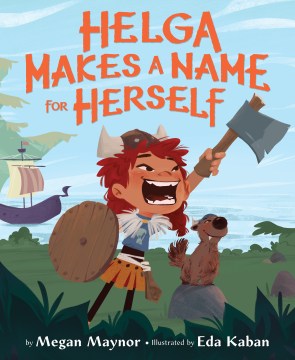
Helga yearns to be a Viking, just like Ingrid the Axe. She begged for stories all the time – at bedtime, during her monthly bath and even fish-pickling time. Her parents tried to calm her ambition, telling her that she was a ‘farmersdotter’ and wouldn’t become a Viking. But, Helga didn’t let that squash her dreams – she and her pet wolverine spent their days doing all kinds of Viking stuff (at least she thought it was Viking stuff). One day, she heard that Ingrid the Axe was coming to town to recruit new members for her Viking crew. Ingrid and her wolverine headed down to town to pursue her dreams. She competed against other would-be Viking recruits and almost made it several times. She finally won a competition and just as Ingrid was about to speak, Helga’s parents ran up to apologize for their daughter’s silliness. Ingrid announced that Helga the Howler was invited to join her crew! The rest, as they say, is history. Helga the Howler and her trusty wolverine plied the oceans of the flat world, gaining fame and fortune as a might Viking Warrior!
This is a wonderful story of perseverance and following your dream, no matter how unlikely. Illustrations are cartoon-like and bright. The story moves along at a face pace with several chuckle-inducing asides along the way. There is also an author’s note and bibliography in the back that includes titles for further consideration and websites for exploration. Highly Recommended.


